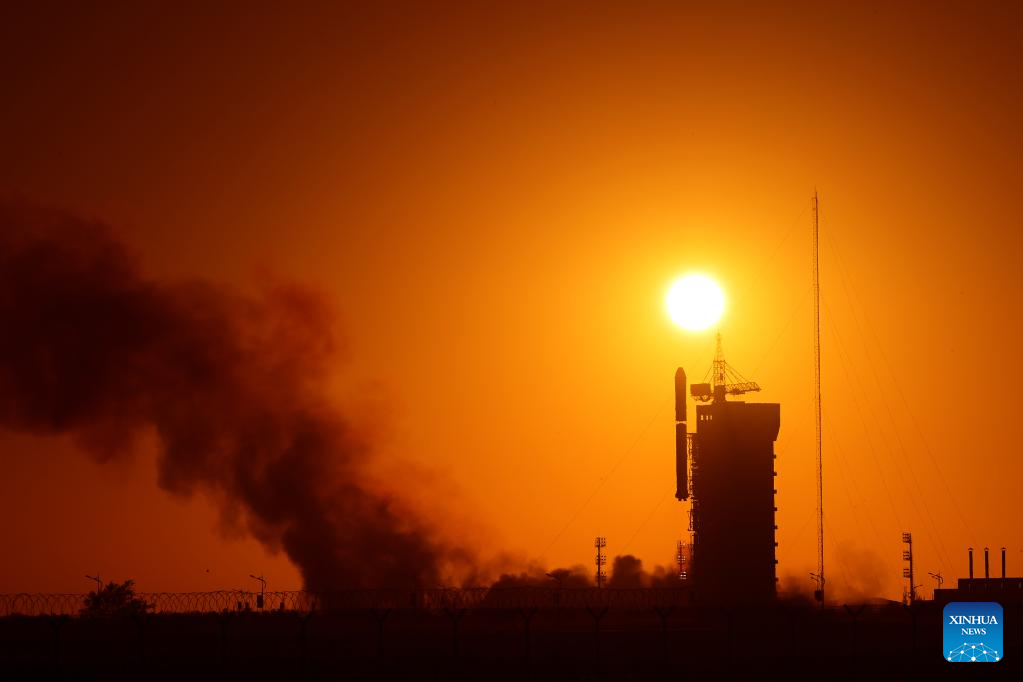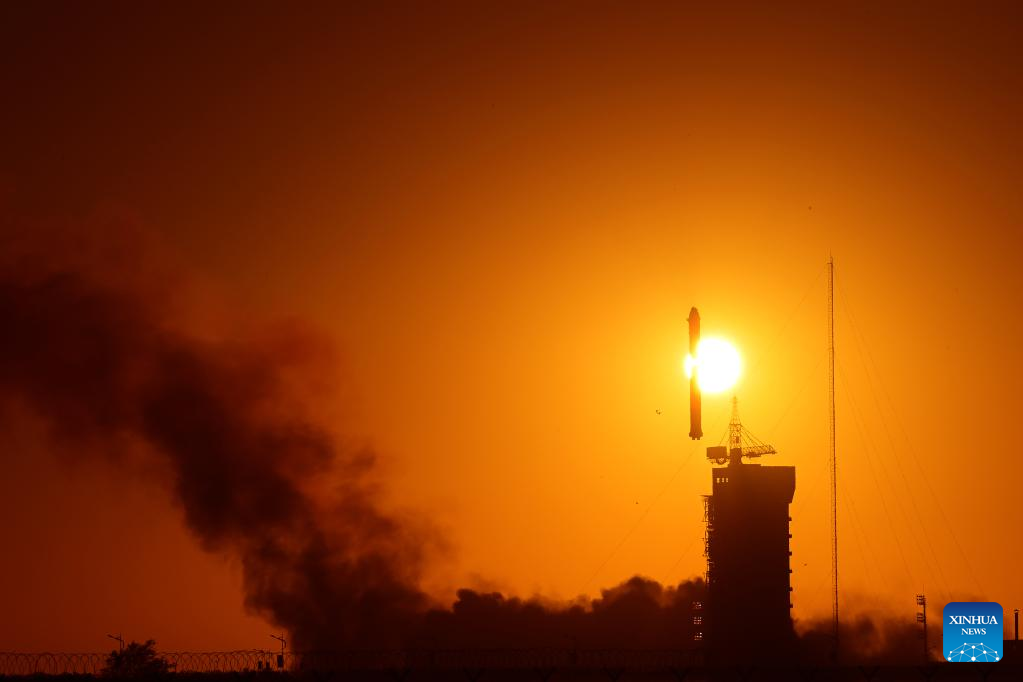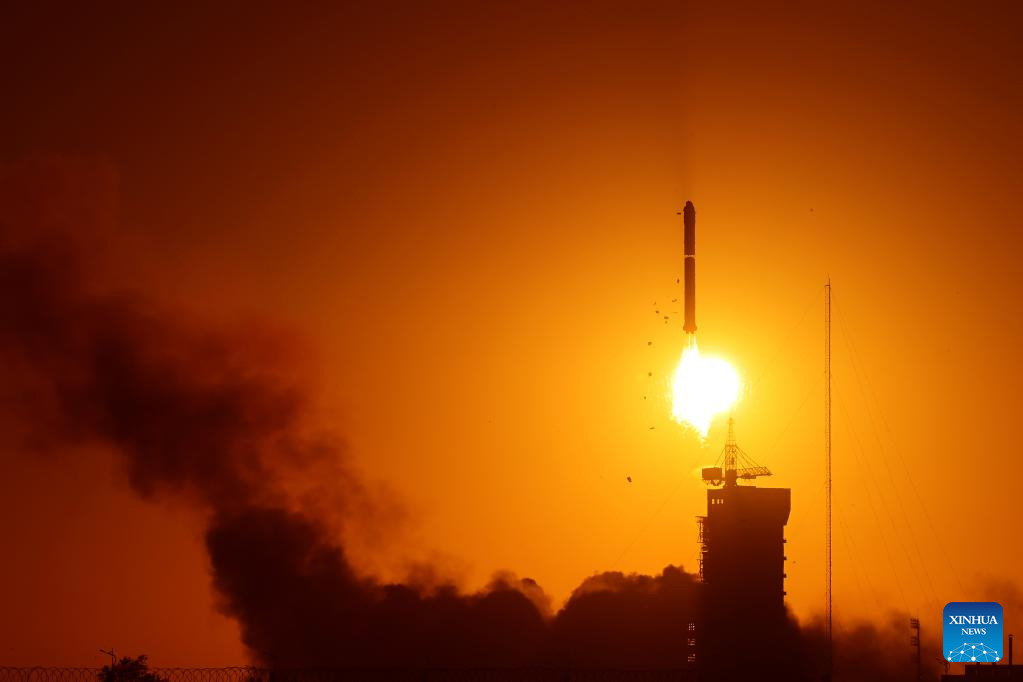
A Long March-2D carrier rocket carrying the Advanced Space-based Solar Observatory (ASO-S) blasts off from the Jiuquan Satellite Launch Center in northwest China, Oct. 9, 2022. China lifted off the solar exploration satellite into space on Sunday, furthering the country's scientific endeavor to unravel the secrets of the Sun. (Photo by Wang Jiangbo/Xinhua)
JIUQUAN, Oct. 9 (Xinhua) -- China sent a solar exploration satellite into space from the Jiuquan Satellite Launch Center in northwest China on Sunday, furthering the country's scientific endeavor to unravel the mysteries of the Sun.
The Advanced Space-based Solar Observatory (ASO-S), nicknamed Kuafu-1 in Chinese, was launched aboard a Long March-2D rocket at 07:43 a.m. (Beijing Time) and entered its planned orbit successfully.
After four to six months of testing, the 859-kg satellite will start normal operation 720 kilometers away from the Earth to study the causality between the solar magnetic field and two major eruptive phenomena, namely solar flares and coronal mass ejections, thus providing data support for space weather forecasting.
CHASING THE SUN
The solar observatory, named after Kuafu, a giant in Chinese mythology who indefatigably chased the sun, will extend its working hours to over 96 percent of the year.
A space-borne observatory running at a sun-synchronous orbit is not hampered by the Earth's rotations, while an Earth-based telescope can see the Sun only in the daytime.
"ASO-S is capable of probing the Sun 24 hours daily for most of the year," said Gan Weiqun, the satellite's principal scientist from the Purple Mountain Observatory (PMO) under the Chinese Academy of Sciences (CAS). "Its longest daily time-out is no more than 18 minutes when briefly running through the shadow of Earth each day from May to August."
The solar probe, with a projected life of no less than four years, is designed to accumulate and transmit back some 500 gigabytes of data within a day, which is equivalent to tens of thousands of high-quality images.
"The onboard detectors take pictures every few seconds or minutes, and during solar eruptions, they can rapidly increase their shutter speed to only one second so as to capture solar activities with more details," said Huang Yu, associate chief designer of ASO-S science application system.
During its in-orbit operation, three ground stations in the cities of Sanya, Kashgar and Beijing, far apart from each other, will receive data from space, before sending them in packages over the next four years to a 2,048-core powerful computer mounted at the PMO for decoding. ■

A Long March-2D carrier rocket carrying the Advanced Space-based Solar Observatory (ASO-S) blasts off from the Jiuquan Satellite Launch Center in northwest China, Oct. 9, 2022. China lifted off the solar exploration satellite into space on Sunday, furthering the country's scientific endeavor to unravel the secrets of the Sun. (Photo by Wang Jiangbo/Xinhua)

A Long March-2D carrier rocket carrying the Advanced Space-based Solar Observatory (ASO-S) blasts off from the Jiuquan Satellite Launch Center in northwest China, Oct. 9, 2022. China lifted off the solar exploration satellite into space on Sunday, furthering the country's scientific endeavor to unravel the secrets of the Sun. (Photo by Wang Jiangbo/Xinhua)

A Long March-2D carrier rocket carrying the Advanced Space-based Solar Observatory (ASO-S) blasts off from the Jiuquan Satellite Launch Center in northwest China, Oct. 9, 2022. China lifted off the solar exploration satellite into space on Sunday, furthering the country's scientific endeavor to unravel the secrets of the Sun. (Photo by Wang Jiangbo/Xinhua)



